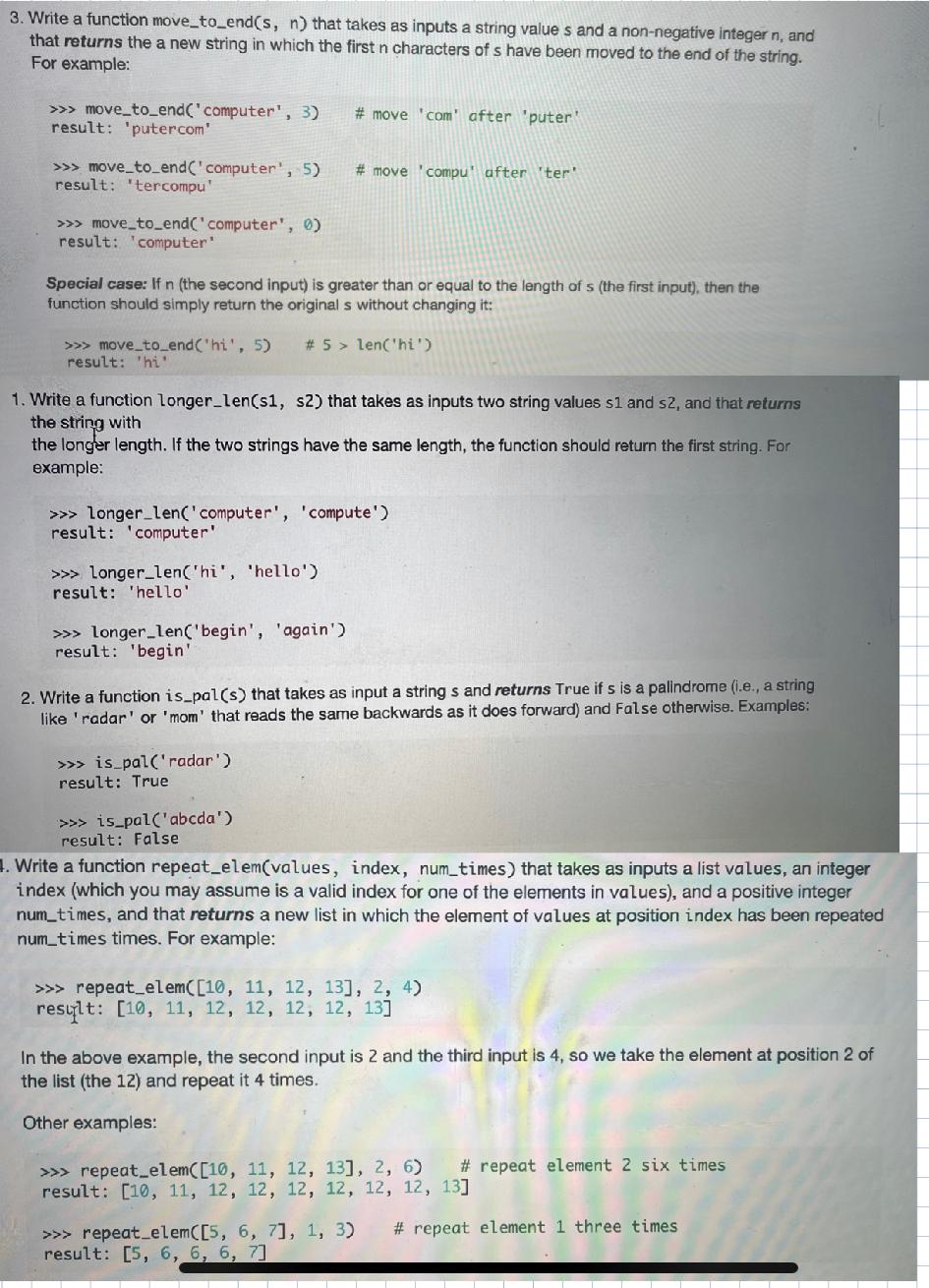Answered step by step
Verified Expert Solution
Question
1 Approved Answer
help with these please, with explanations if you can. Thank you! 3. Write a function move_to_end (s,n) that takes as inputs a string value s
 help with these please, with explanations if you can. Thank you!
help with these please, with explanations if you can. Thank you!
Step by Step Solution
There are 3 Steps involved in it
Step: 1

Get Instant Access to Expert-Tailored Solutions
See step-by-step solutions with expert insights and AI powered tools for academic success
Step: 2

Step: 3

Ace Your Homework with AI
Get the answers you need in no time with our AI-driven, step-by-step assistance
Get Started


